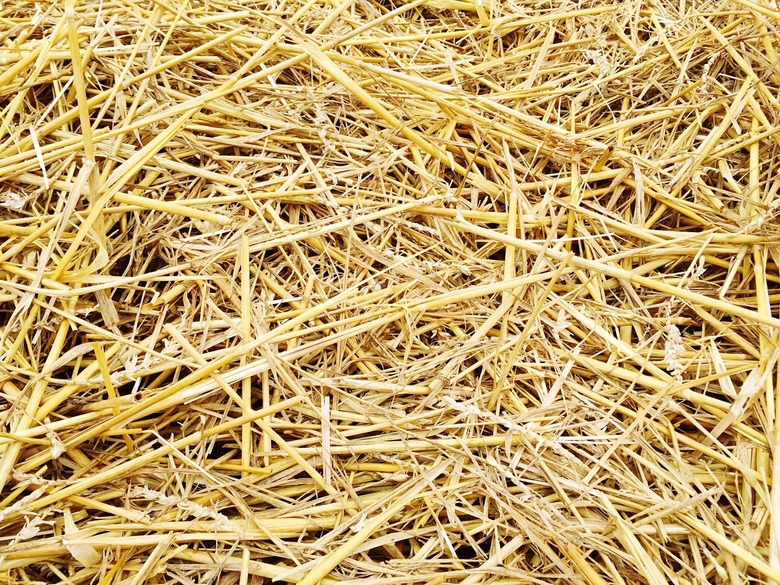How Long Do You Leave Straw On Top Of New Grass Seeds?
Straw is often used to cover newly planted grass seed to reduce the amount of seed relocated by wind and water. A straw mulch is preferred over hay because of its lower seed content.
Until established, grass seed or newly germinated plants will die if allowed to dry out completely. A straw mulch helps slow evaporation of water from the soil and keeps it moist while the grass seeds germinate. Leave the straw on top of the new grass seeds until they've germinated and grown tall enough for the first mowing . After mowing the grass, either remove the straw or leave it to decompose amid the grass blades.
Tip
Leave the straw on top of the new grass seeds until after you've mowed the lawn for the first time. Then remove it or leave it to decompose.
First Cutting of New Lawn
Until grass seedlings are 2 to 3 inches tall, they should remain covered by a straw mulch and foot traffic should be avoided. Grass seedlings will typically take from three to five weeks to reach this height, although it may be different depending on weather conditions. Once the seedlings have reached this height, they are mature enough to handle light foot traffic and should be mowed for the first time.
Never remove more than one-third of the height of the grass in a single mowing. This is especially important for newly established lawns to prevent damage to the grass plants.
While you should usually leave the clippings on the lawn, use a bag mower for the first one or two cuttings of a new lawn. The mower picks up the loose straw as well as the grass clippings so you can easily dispose of the plant debris. A mulching mower, however, chops the straw and grass into tiny bits, which decompose easily to return their nutrients to the soil.
Leave Straw on New Grass
Prior to the first cutting, examine the straw mulch. If the original covering was light enough, with approximately one-half the soil showing through, the mulch will have begun to rot and may not require any removal other than gathering with the grass clippings from the first cutting.
If the mulch is heavier, remove it after mowing with a leaf rake or pitchfork, being careful not to damage the lawn. Heavy pockets of straw mulch can choke out new grass plants, and they may not be picked up with a mower bag. Be especially alert for thick clumps of decomposing straw, as these can be especially harmful to grass seedlings.
If you leave the straw mulch on the lawn, fertilize the new grass lightly with a nitrogen-rich fertilizer three to four weeks after germination. The microbes that break down the straw mulch use nitrogen during decomposition. If you don't feed the grass and microbes, the new lawn may not reach the desired rich green color until the straw has completely decomposed.
Weed Control and New Lawns
Straw is preferred to hay as a grass seed mulch because of its lower seed content. Straw is made of the stems of grass plants, while hay contains the stem plus the flowers and seeds. Still, straw will contain some amount of seed from farm grasses and weeds. These plants are undesirable in a new lawn.
Removing the straw mulch from the grass seed sooner may reduce the number of weeds that germinate, although most of the seed content has likely reached the soil in the first few days.
